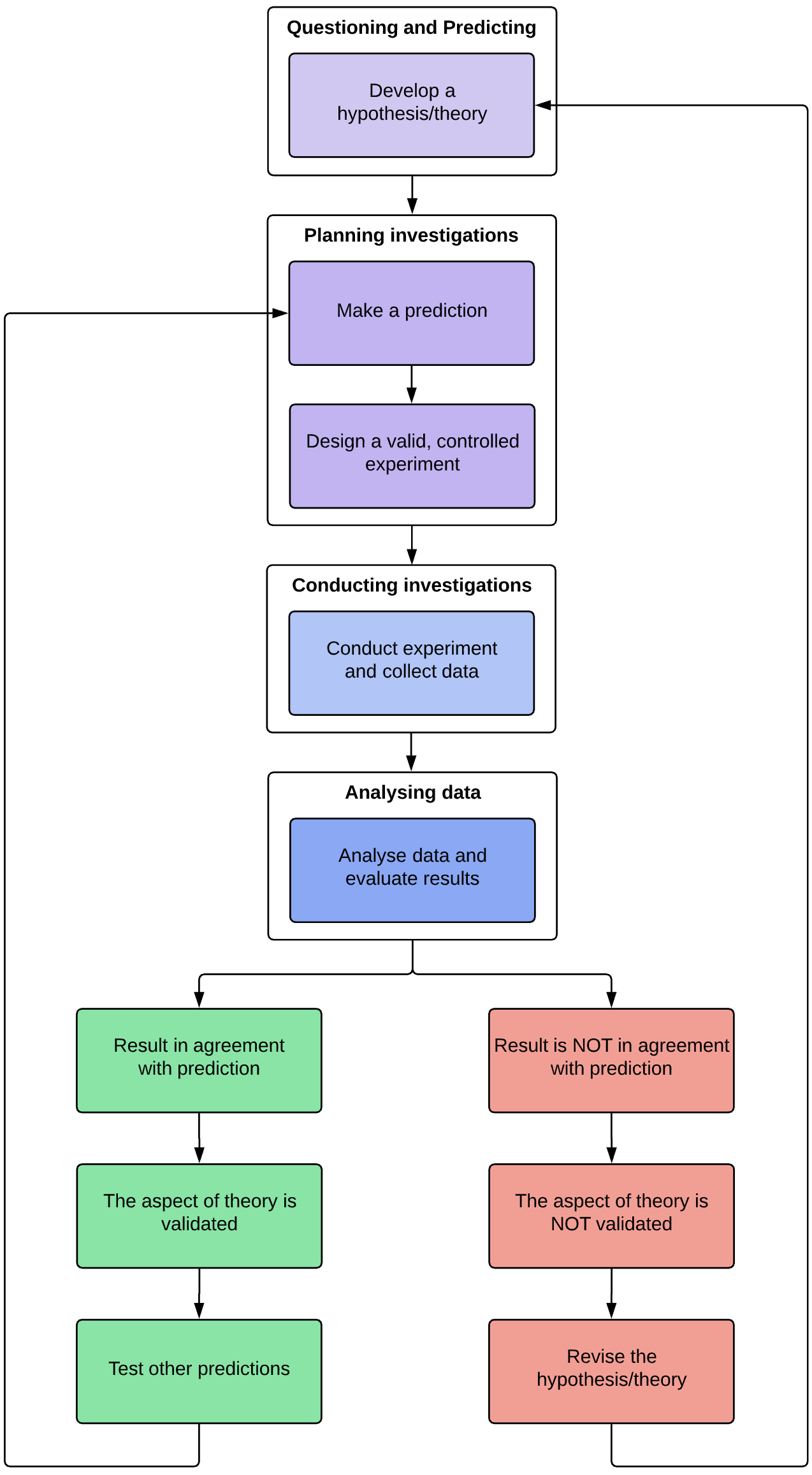Chapter 2: How to Plan and Conduct Physics Practical Investigations
Physics Practical Investigations
Physics practical investigations are an important part of your Year 11 & 12 Physics course. They are compulsory and weigh at least 60% of your overall school assessment mark.
Physics practical investigations involve the collection of primary data. They may include
- undertaking laboratory experiments, including the use of appropriate digital technologies
- undertaking fieldwork and surveys
- constructing models
In this article we’re going to discuss:
- The scientific method for designing and conducting a Physics practical investigation
- Sample Physics Practical Assessment Task on Projectile motion
- How to write a Physics Practical Investigation Report
How to Plan and Conduct any Physics Practical Investigation
Step 1: Know the essential scientific skills
The essential scientific skills required for practical investigations are listed below.
- Identifying types of variables (independent, dependent, and control variables).
- Assessing validity, reliability and accuracy.
- Determining the source of experimental errors.
- Drawing and analysing appropriate graphs, including a line of best fit.
You’ll need to be demonstrate a high level of competency in these scientific skills prior to planning your physics practical investigation.
For a detailed explanation on the essential scientific skills, read the Matrix blog ‘The Beginner’s guide to Physics Practical Skills‘.
Step 2: Apply the scientific method to design and conduct a practical investigation
When designing a practical investigation, you’ll need to apply the scientific method illustrated in the flowchart below.

The scientific method consists of four main stages:
- Questions and predicting
- Planning investigations
- Conducting investigations
- Analysing data and evaluating results.
The scientific method is explained in the table below.
| Stage | Steps and Explanations |
| Questioning and predicting | Step 1: Theory A practical investigation must be designed based on a hypothesis or a theory. For example, a practical investigation involving projectile motions can be based on the equations of motions. Step 2: Aim Using a theory, we can make a prediction. This is the aim of the experiment. |
| Planning investigations | Step 3: Method To design a valid controlled experiment, write the method by:
When writing the method, we must ensure each step incorporates reliability, accuracy and validity. The purpose for the method of an experiment is to provide a clear instruction on how to conduct the experiment validly whilst improving accuracy and reliability of the results. |
| Conducting investigations | Step 4: Results To conduct investigations:
|
| Analysing data | Step 5. Quantitative analysis of results: Graphs and calculations To analyse data:
Step 6: Qualitative analysis: Evaluation of method and errors To discuss experimental errors and suggest improvements
For more information on analysing and evaluating data, read Physics Study Guide Part 2: ‘How to Study for Year 12 Physics Data Analysis Task‘. |
How to Write Physics Practical Investigation Report
When writing the Physics practical investigation report, it should include:
- Title
- Abstract
- Introduction
- Hypothesis or Theory the investigation is based on
- Aim
- Method
- Results
- Discussion
- Quantitative analysis of results: Graphs and Calculations
- Qualitative analysis: Evaluation of method and errors
- References
Let’s apply the scientific method to plan, design, conduct and analyse the practical investigation.
For a step-by-step explanation on how to write a practical report for your depth study, read this article, ‘How to Write a Practical Report: Depth Study Report Template’.
Access our library of Physics Practical Investigations.
Get free access to syllabus specific Physics Practicals written by expert HSC teachers. Join 10000+ students who are getting ahead with Learnable. Try for free now.

Learnable Education and www.learnable.education, 2019. Unauthorised use and/or duplications of this material without express and written permission from this site's author and/or owner is strictly prohibited. Excerpts and links may be used, provided that full and clear credit is given to Learnable Education and www.learnable.education with appropriate and specific direction to the original content.